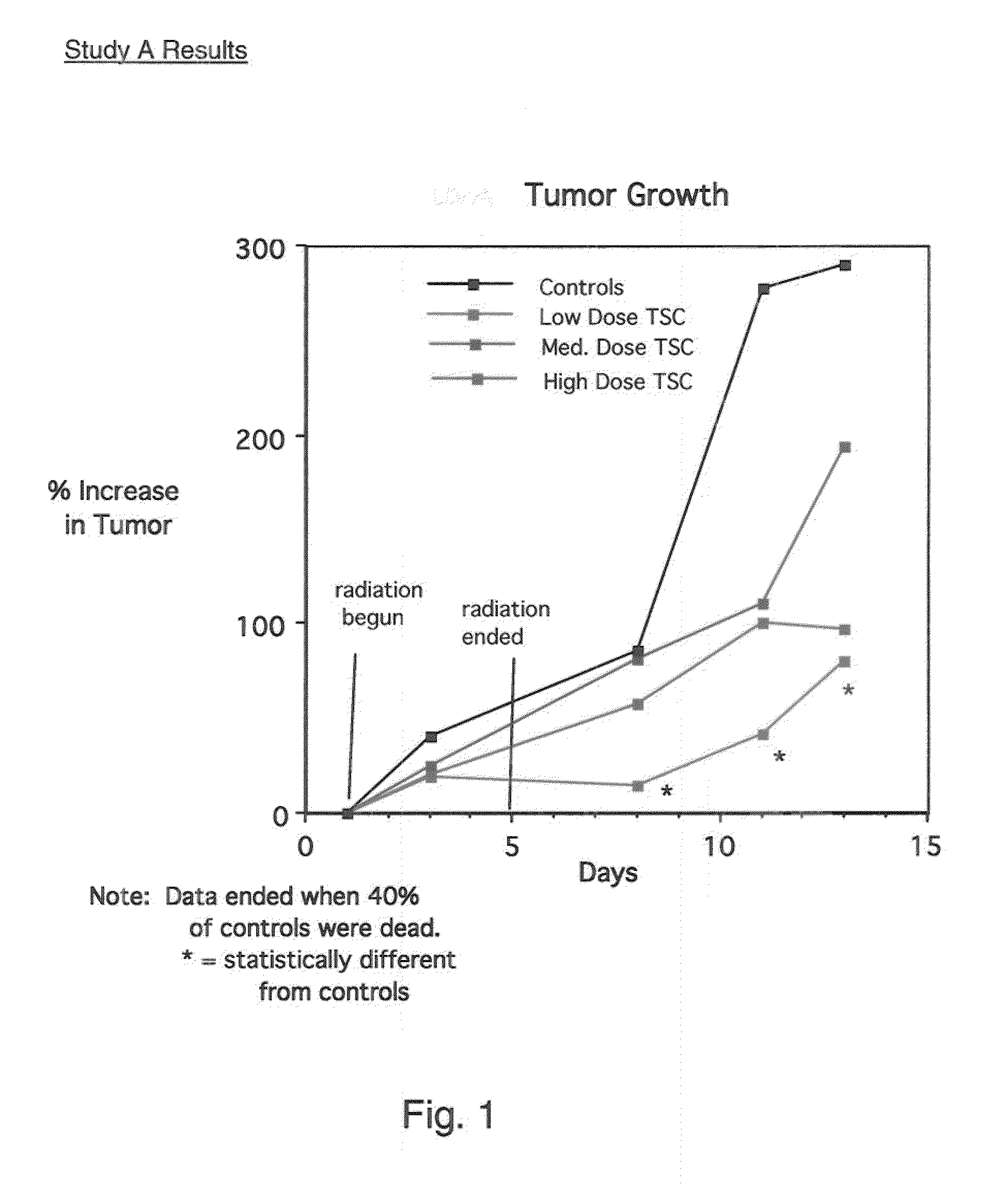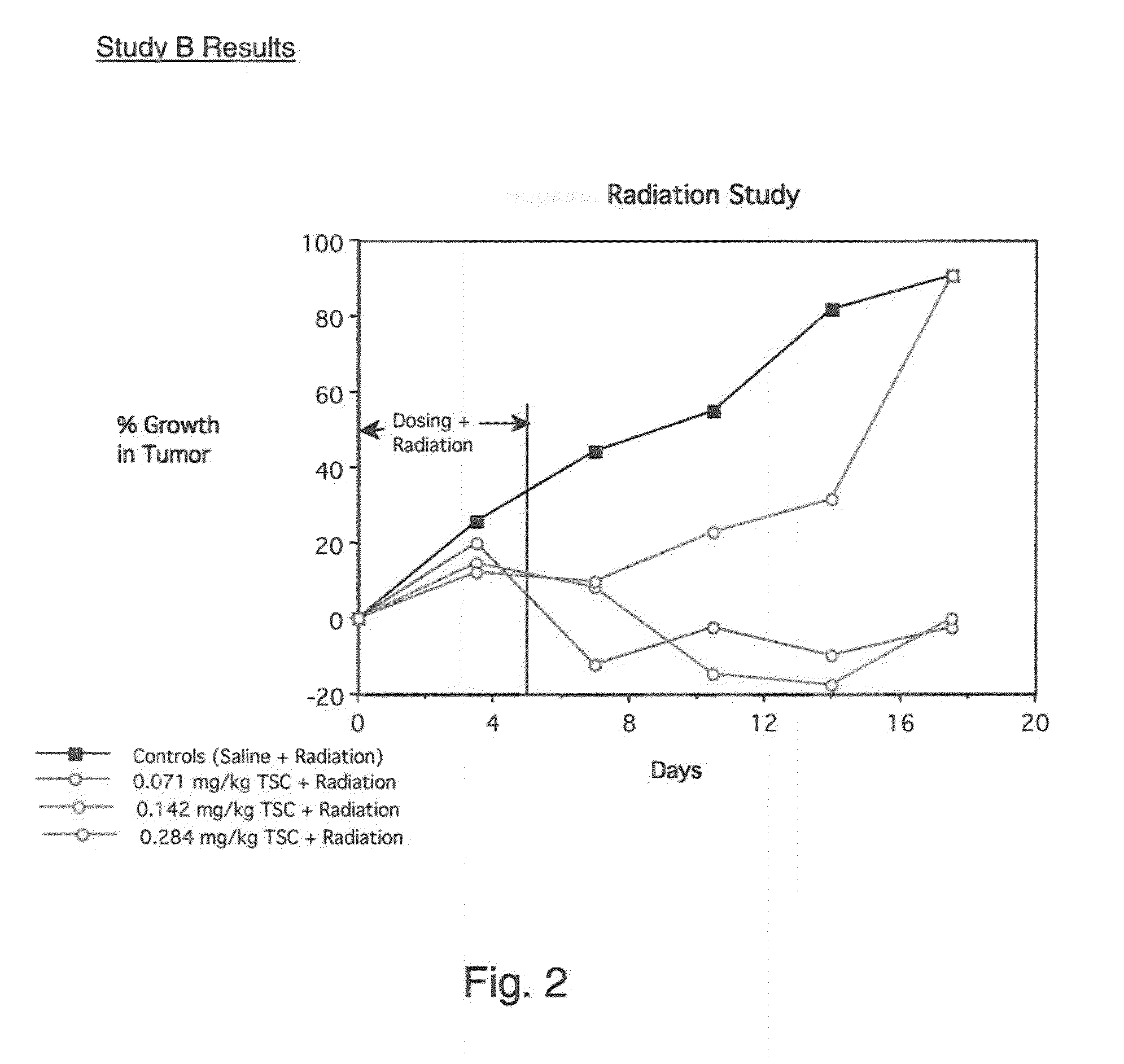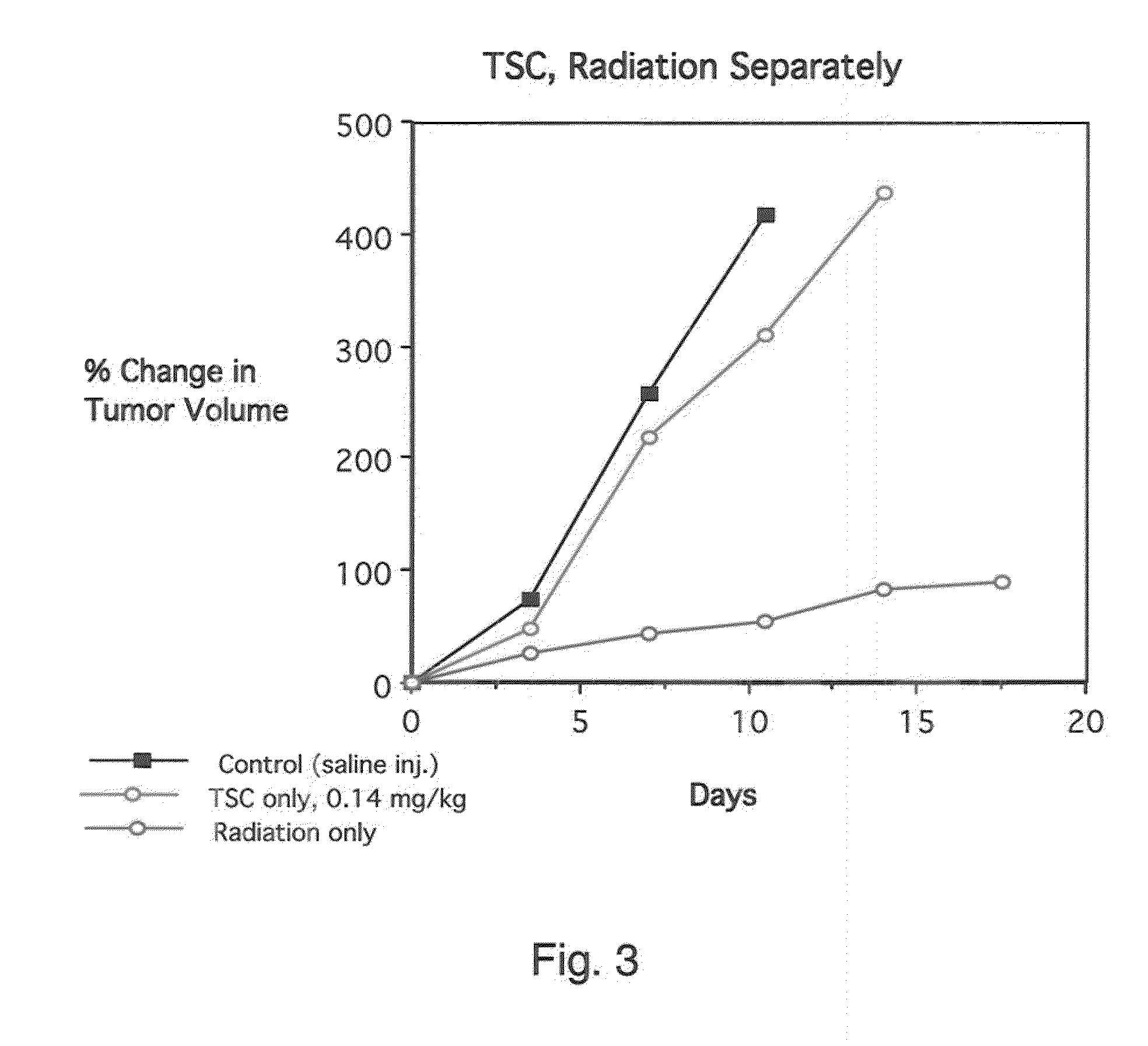Trans carotenoids, their synthesis, formulation and uses
a carotenoids and trans technology, applied in the field of trans carotenoids, their synthesis, formulation and use, can solve the problems of difficult formulation for biological use, low soluble water content of carotenoids that might be thought of as bipolar, and limited soluble water content of crocetin
- Summary
- Abstract
- Description
- Claims
- Application Information
AI Technical Summary
Benefits of technology
Problems solved by technology
Method used
Image
Examples
example 1
Small-Scale Synthesis of 165 g TSC
Overview of Chemical Reaction
[0129]
Synthesis of Compound E (Diethyl 2,6,11,15-Tetramethyl-hexadeca-2E,4E,6E,8E,10E,12E,14E-heptaene-1,16-diotate)
[0130]
Size:130 g Compound A0.792 mol (nc)Th. Quantity:304.4 g Compound EPr. Quantity:139.6 g Compound D +0.736 mol (nc)143.2 Compound EYield (nc):92.9%Purity:93.68% + 96.99% a / a HPLCMolecularPos.ReagentWt.Eq.QuantityUnit1Compound A164.201.0130g2Compound D444.0113.01052g3Butylene oxide0.64L4Toluene1.27L5Ethanol0.15L6Methylcyclohexane0.79L7Butylene oxide0.20L8Toluene0.50L9Ethanol0.10L10Methylcyclohexane0.40L11Methanol1.00L1The used material was a salt mixture containing 48% bromide and 52% chloride according to the CoA of the supplier. Thus, the real mass was different from the theoretical one as depicted on the formula scheme.
Procedure
[0131]1. A flask was evacuated and purged with nitrogen.[0132]2. The flask was charged with Compound A (1) and Compound D (2) at JT=20° C.[0133]3. Butylene oxide (3) and toluen...
example 2
Production of Larger-Scale (2 Kg) TSC Under cGMP Conditions
[0172]
Raw Materials
[0173]The quality of the starting materials (Compounds A and D) were verified and testing results are shown below:
HPLC-PurityLot-No.(% a / a)AppearanceIdentity by IRE-027211-00295.22Yellow PowderComplies(UQ40112015; C10dial,; Compound A)E-027684-00194.70Yellow PowderComplies(UQ40112015; C10dial,; Compound A)E-027684-00294.60Yellow PowderComplies(UQ40112015; C10dial,; Compound A)E-027758-001-97.88White PowderCompliesE-027758-003,E-027685-001-E-027685-021(UE00401004; C5Wittig ester,;Compound D)
[0174]All materials fulfilled the given specifications (Compound D: ≧97.0%; Compound A: ≧94.0%). Furthermore, all materials were prepared synthetically without the use of any animal components or any components derived from animal products.
[0175]The C-10 dial (Compound A) was a yellow crystalline powder. The phosphorane, Compound D, was a white to yellow powder. The identities were checked by 1H-NMR.
Synthesis of Compound...
example 3
Synthesis of Trans Potassium Crocetinate (di-potassium 2,6,11,15-tetramethylhexadeca-2E,4E,6E,8E,10E,12E,14E,-heptane-1,16-diotate)
[0242]Trans potassium crocetinate is also referred to below as TPC or Compound F. The
[0243]The saponification reaction (last step in the synthesis) was performed in a similar fashion to the process used in Examples 1 and 2 above. The diethyl ester, Compound E, was prepared as described above in Examples 1 and 2.
[0244]For this example, Compound E was treated with 30% potassium hydroxide (KOH) (1.5 ml / mmol) in ethanol (EtOH) (1.5 ml / mmol) at 90° C. for 4 days. The mixture was diluted with ethanol due to some solvent loss during the process. The orange product was isolated by filtration at room temperature (22° C.) and by washing with 50% ethanol in water (3×). The product was dried on a rotary evaporator for 5 h at JT=60° C. This produced a reaction yield of 86% (12 g experiment). An 1H-NMR spectrum and an LC-MS spectrum confirmed the desired product was t...
PUM
 Login to View More
Login to View More Abstract
Description
Claims
Application Information
 Login to View More
Login to View More - R&D
- Intellectual Property
- Life Sciences
- Materials
- Tech Scout
- Unparalleled Data Quality
- Higher Quality Content
- 60% Fewer Hallucinations
Browse by: Latest US Patents, China's latest patents, Technical Efficacy Thesaurus, Application Domain, Technology Topic, Popular Technical Reports.
© 2025 PatSnap. All rights reserved.Legal|Privacy policy|Modern Slavery Act Transparency Statement|Sitemap|About US| Contact US: help@patsnap.com



